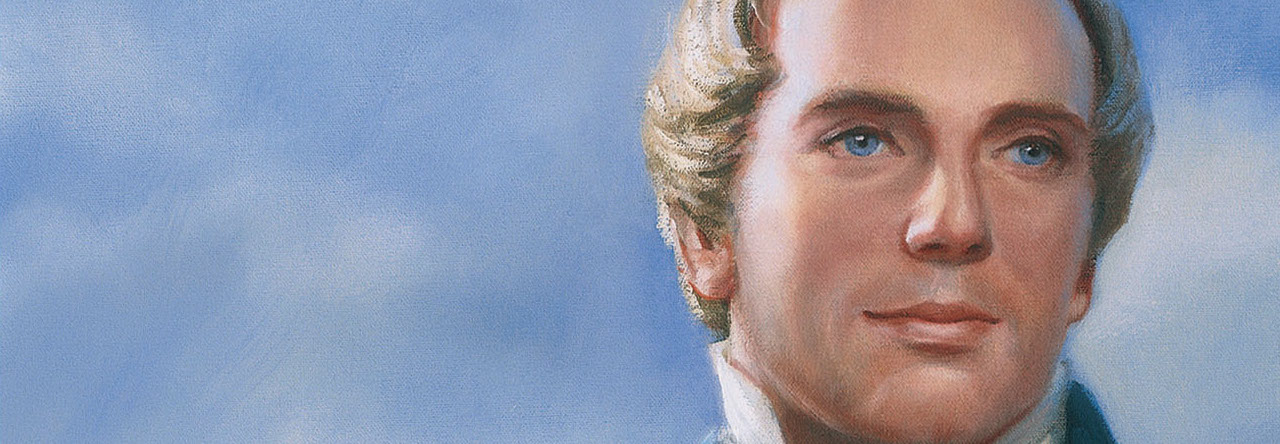
I know that we who are queer are always stronger than we think we are. We are resilient and determined. Our love is stronger than our enemies’ hate.
How do I know this?
I can bear witness that the moment a queer person can proudly say, “I am who I am, and I’m not going to be someone I’m not,” that person welds an eternal connection with the sacred name of the living God (Exodus 3:14).
I can bear witness that the most modest hope of a queer person can thoroughly eviscerate the devil and render him powerless, as this disrupts his plan to make us miserable like unto himself.
I can bear witness that the smallest tear that plops from the eye of a queer person will not reach the ground before being noticed by our Heavenly Parents, and all the angels of heaven, too.
I can bear witness that centuries of heterosupremacist tradition go up in flames when ignited by the simply spoken insistence, “I, too, am a child of God.”
I can bear witness that the most sacred forms of prayer on earth derive their authority from the cries of those who are oppressed: “Hear my prayer, O God; give ear to the words of my mouth. For strangers are risen up against me, and oppressors seek after my soul.” (Psalm 54:2–3)
I can bear witness that queer people exist, not so that they might become straight, but that they might have joy (2 Nephi 2:25).
I can bear witness that the Lord did not send me into this world only to forget about me.
I can bear witness that there is more room for me in the plan of salvation than there is in the closet.
I can bear witness that no one can blame their homophobia on the God who created me gay.
I can bear witness that I would not have accepted the plan of salvation in premortality if there were not a place for me in it.
I can bear witness that anyone who prays the following prayer and knows the meaning thereof will never die: “For thou lovest all the things that are, and abhorrest nothing which thou hast made: for never wouldest thou have made any thing, if thou hadst hated it.” (Wisdom of Solomon 11:24, which is applicable to us with the Spirit’s enlightenment according to D&C 91)
I can bear witness that the only place for homophobia in the Church is in the Church History Museum.
I can bear witness that a handful of people can change the world, and that’s exactly how the Lord has always worked in the world.
I can bear witness that no matter what earthly experts do to me because I don’t fit into their building plan, I know that the stone that the builders rejected will become the chief cornerstone. (Psalm 118:22).
I can bear witness, to those who think that we are in last place, that the first shall be last, and the last shall be first (Matthew 20:16).
I can bear witness that I can never attack the leaders or members of Christ’s Church, because I have no weapons of pencil or pixel with which to attack. I am completely disarmed by Christ’s example on the cross. I have no weapons; I have nothing but the unarmed truth of my people and unconditional love for all people. And this will change everything.
I can bear witness that this is my Church, too.
I can bear witness that Satan screamed and cried the day I joined this Church, because he HATES to see gay people happy.
I can bear witness that revelation is not an exact science, but requires an enormous amount of human input and readiness. I am patient with Church leaders and members, and my solemn expectation is that they will be patient with me. My patience is based on the fact that our prophetic gifts and our knowledge are limited, partial, and imperfect, and will be until the end of time. “Charity never faileth: but whether there be prophecies, they shall fail; whether there be tongues, they shall cease; whether there be knowledge, it shall vanish away. For we know in part, and we prophesy in part. But when that which is perfect is come, then that which is in part shall be done away.” (1 Corinthians 13:8–10).
I can bear witness that we are all members of a diverse body (1 Corinthians 12). When a anyone attacks, condemns, or dehumanizes an LGBT member, it’s not “us vs. them,” it’s “us vs. us.” They are making the body of Christ engage in self-cannibalism.
I can bear witness that the Church can change and will change and always is changing, as growth and development is the whole point of our mortal journey, and our Church is founded on the rock of revelation.
I can bear witness that the Church is true. I can prove neither this truth nor my hope, but I do not need to. There is never enough proof, but there is always enough revelation.
I can bear witness that nothing, neither my orientation, nor my opponents’ heteronormativity, can deprive me of access to my Father’s unconditional love. “For I am convinced that neither death, nor life, nor angels, nor rulers, nor things present, nor things to come, nor powers, nor height, nor depth, nor anything else in all creation, will be able to separate us from the love of God in Christ Jesus our Lord.” (Romans 8:38–39)
Somewhere I read that “all are alike unto God,” and I know that we will be ever more fully living into this truth, line upon line upon line. Let’s walk this journey together, hand in hand.
In the name of Jesus Christ. Amen.











